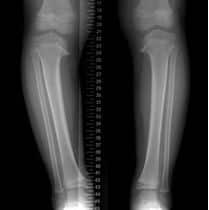Growing pains are common in children between the ages of 3 and 5 years old and the ages of 8 and 12 years old. Approximately 25% to 40% of children will experience growing pains at some time in their lives. While the cause of growing pains is unknown, they can often be relieved through a combination of massaging, application of heat wraps, and over-the-counter pain relief medications.

How often the pain occurs can be – and usually is – different for each child. Overall, it usually doesn’t even appear every day. The cause is unknown, but it is most likely that growing pains happen because of the stress put on the legs during physical activity. If a child is running, jumping, climbing and playing all day, that can correlate to worsening pain later on.
Here is a list of common symptoms of growing pains:
Because there are no symptoms to make growing pains stand out as a medical condition, doctors will do a “diagnosis of exclusion” (our version of the process of elimination) to rule out any other condition that can cause pain such as an injury.

Usually, the doctor only needs to physically examine the child and review their medical history to make a diagnosis of growing pains; in more rare cases, blood tests and X-ray studies may also be required.
One symptom that doctors find helpful in diagnosing growing pains is the child’s response to touch while in pain. Children who have pain from a serious medical problem don’t like to be handled because movement tends to increase the pain. However, children with growing pains typically feel better when they are held, massaged, and cuddled when symptoms are present.
Treating a child with growing pains can be done in the comfort of home. Parents can try one of the following treatments below to bring pain relief to their children:
Growing pains usually occur at night, so child will feel better in the morning. For most parents, growing pains will cease completely once the patients reach their teens.